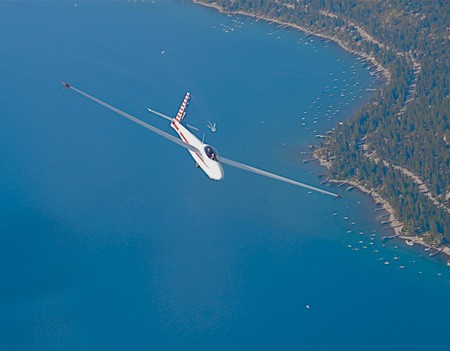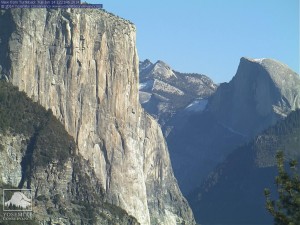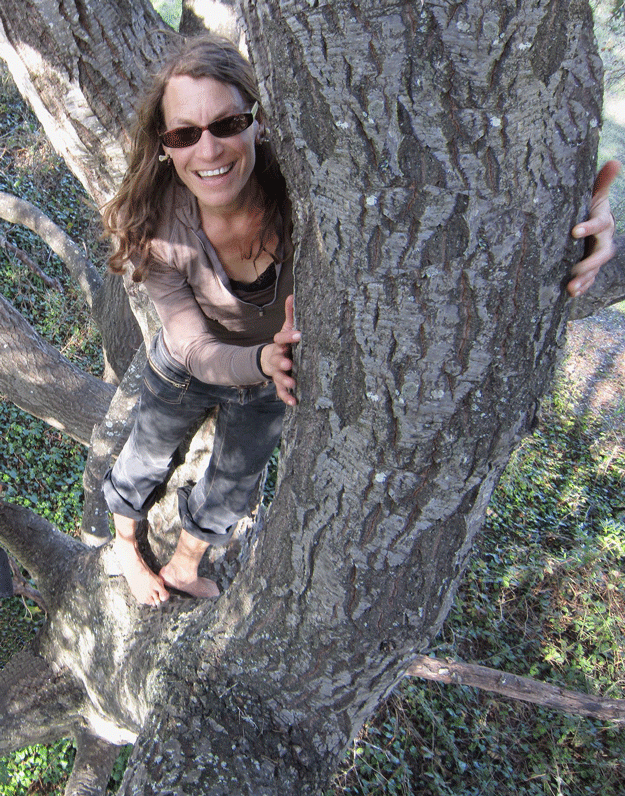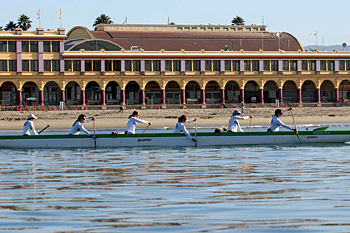- Tahoe’s Nevada Beach Tops the List of Hard-to-Book Campgrounds - 07/17/2024
- Cannabis Watershed Protection Program Cleans Up Illegal Grow Sites - 07/10/2024
- French Fire - 07/05/2024
Why the Sierra is top spot for putting wind under glider wings
By Robert Frohlich • Photos Courtesy of Soar Truckee

Soaring over Lake Tahoe. Expert pilots can travel from Truckee to Mount Whitney and back in a day without relying on a drop of fuel once reaching altitude.
It’s probably the closest thing to flying the way birds do – not just metaphorically, but aerodynamically as well.
The sport is soaring and your wings come in the form of a sailplane, a modern-day pterodactyl that is made of aluminum, fiberglass, carbon composites and specially treated fabrics.
Sailplanes vary in size from under 40 feet to over 80 and are designed to withstand G forces greater than that of an airplane. They have a glide ratio of 35:1 up to 50:1. Glide ratio is the horizontal distance covered divided by the amount of descent.
They’ve also been known to fly at altitudes that jetliners cruise, particularly on the eastern flank of the Sierra.
The Nevada state record of 46,000 feet was set over Minden by Ed Peerens, while the world altitude record of 49,000 feet was set over Lone Pine in California’s Owens Valley by Bob Harris.
“Soaring is a pure form of flying. It’s back to the basics — all about stick and rudder,” says Court Farrel, a commercial airline pilot who flies 747s for Cathay Pacific.
In the Sierra Nevada, soaring is far from being consigned to an exotic realm of its own, somewhere in the blue yonder. There are an estimated 200 to 300 glider pilots in the Truckee-Reno area and roughly more than 100,000 across the world.
This individualistic but far from laid-back sport was first introduced into this country during the 1920s from pioneer pilots at Wasserkuppe, a high plateau in Germany’s Rhön Mountains. But you don’t have to go any farther than the Martis Valley outside Truckee for some of the best soaring conditions in North America.
“Because of its geographic and atmospheric conditions, the Truckee area is one of the five or six best places for soaring on earth,” says Joe Silvestri, former manager of Soar Truckee Inc. (The new manager is Doug Lent.) “The scenery is especially beautiful and long flights in the summer months are easily attainable because of the tremendous lift.”
The tremendous lift that Silvestri speaks of is the most sought after meteorological effect in soaring — thermal lift, rising currents of air created when the sun heats the ground.
Such currents are especially prevalent over mountainous terrain. Even though invisible, they are easily sensed by an experienced pilot who will usually do his best to maneuver so as to stay near the core of the thermal, letting it carry him higher until it begins to dissipate.
There are other types of lift such as ridge lift and wave soaring, but thermals are the primary power under the wings. Without them a sailplane would have no way of gaining altitude. With them, pilots have been known to cover distances of more than 1,000 miles without touching down, without burning a drop of fuel (other than the initial tow).
“Because the Sierra Nevada suns north to south, it’s not unusual for snome pilots to travel from Truckee down to Mount Whitney and back in one day,” says Silvestri, whose managerial role is now filled by Doug Lent.
“In the Sierra Nevada, thermals start earlier in the day and last longer than other areas of lesser elevations,” adds Farrel.
Operating out of the Truckee-Tahoe Airport, Soar Truckee offers scenic flights, lessons, tow service, oxygen service, tie downs and flight reviews.
“Soaring is an extremely safe sport,” insists Silvestri, a former commercial charter pilot who has been flying sailplanes for more than 25 years. “Sailplanes can be piloted at extremely low speeds, there is never any fuel to catch on fire, and, in general, sailplane pilots tend to be much more precision type pilots, more aware and developing finer concentration.”
Though soaring can be an expensive sport if one invests in a plane, it is relatively inexpensive and quite available for the beginner wanting to learn, or just a visitor wanting to go up for an unforgettable ride.
“Soaring the Sierra takes me totally outside myself,” says Farrel. “It is very pure. I get excited about soaring every time I go up. Every flight is different from the last; every thing is still new. Cooking off the thermals is like surfing a classic wave. It comes closer to the ancient dream of human flight than any of the more technically advanced forms of human flight are ever likely to.”













